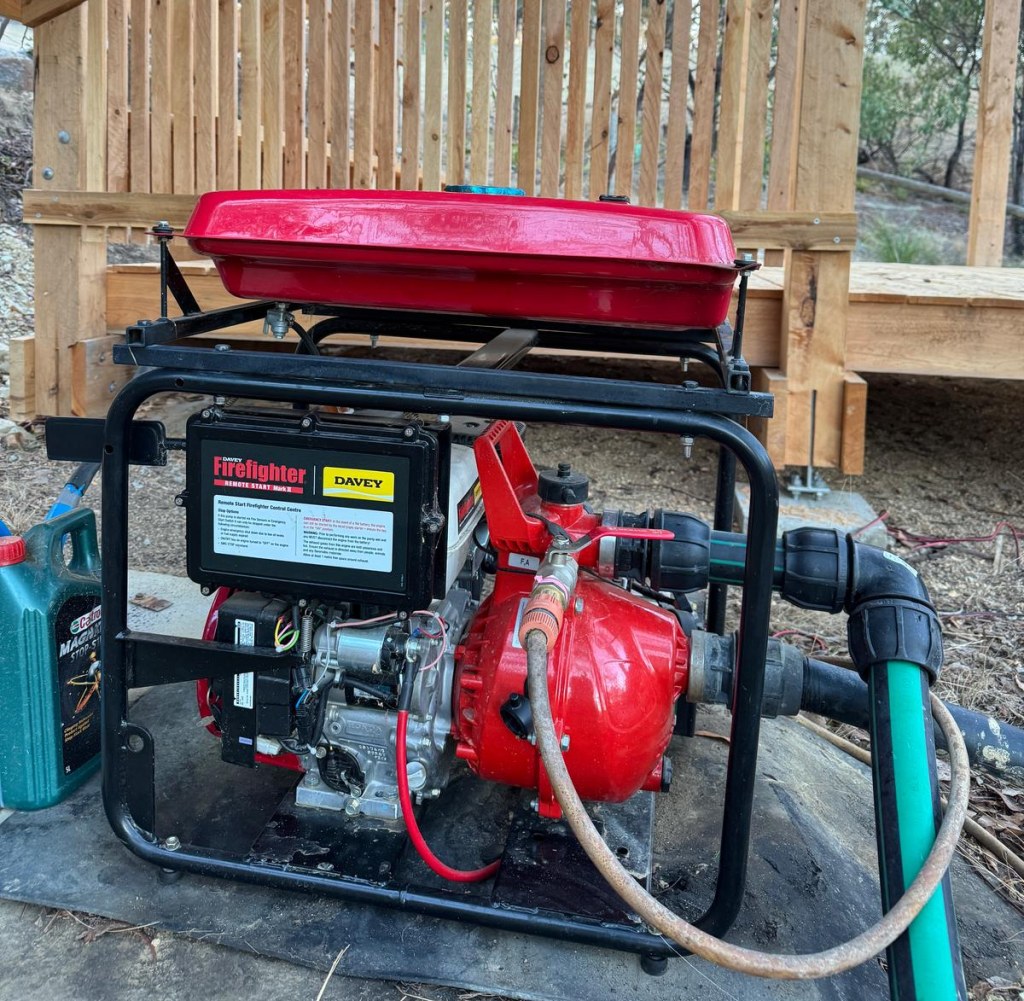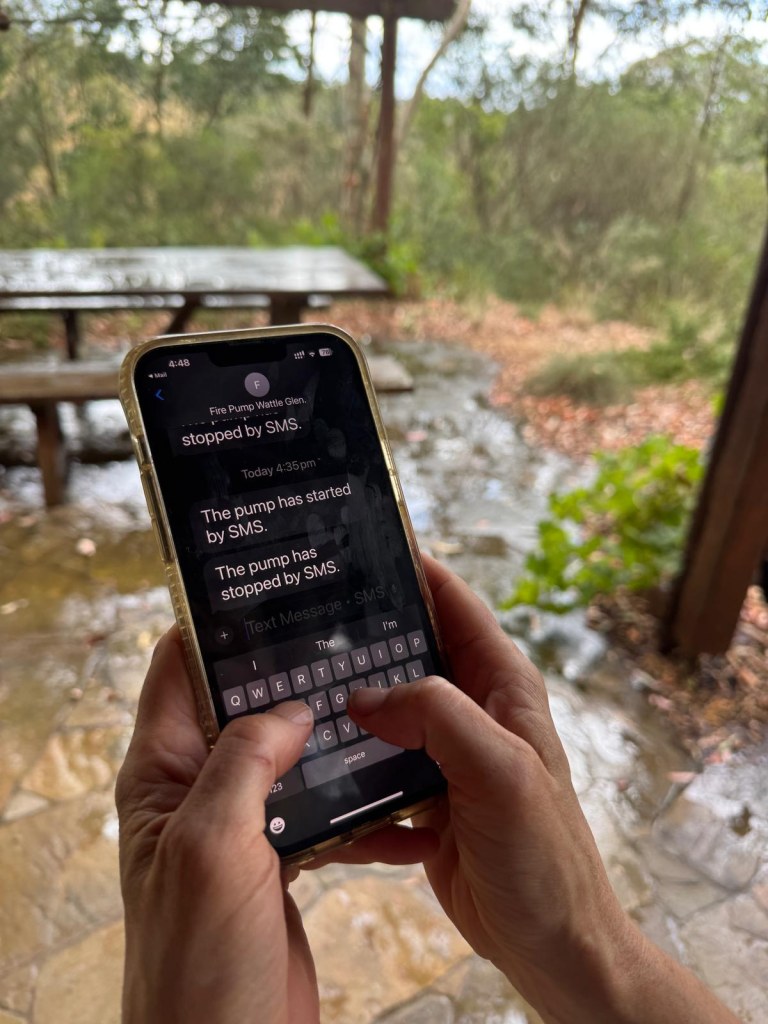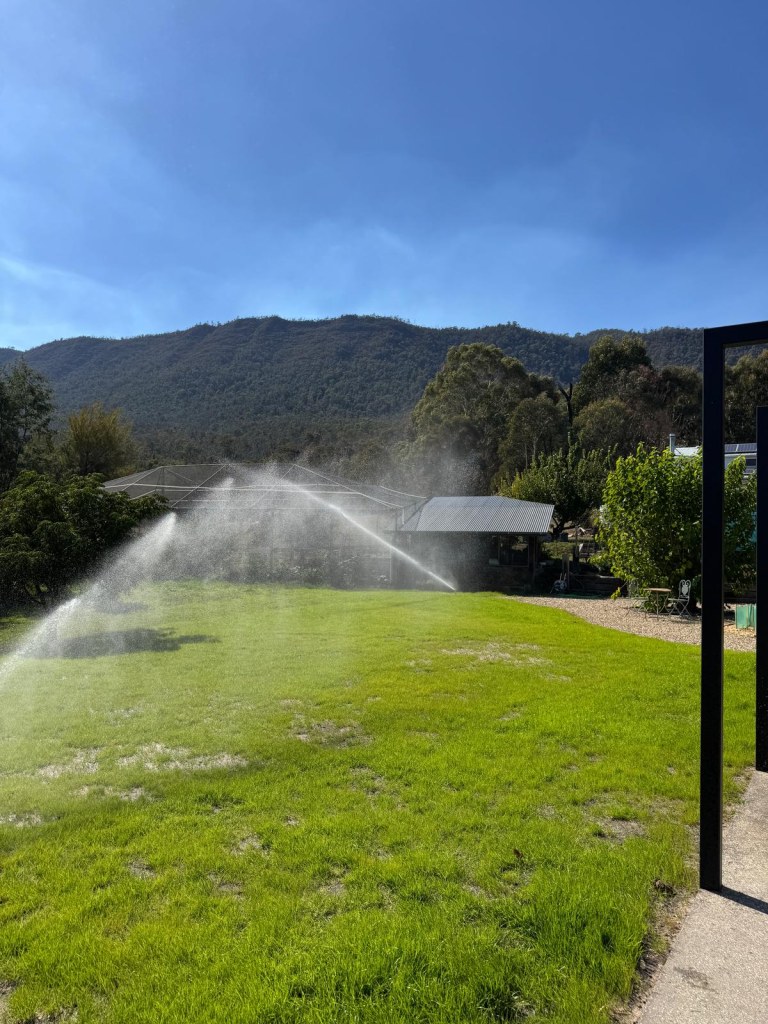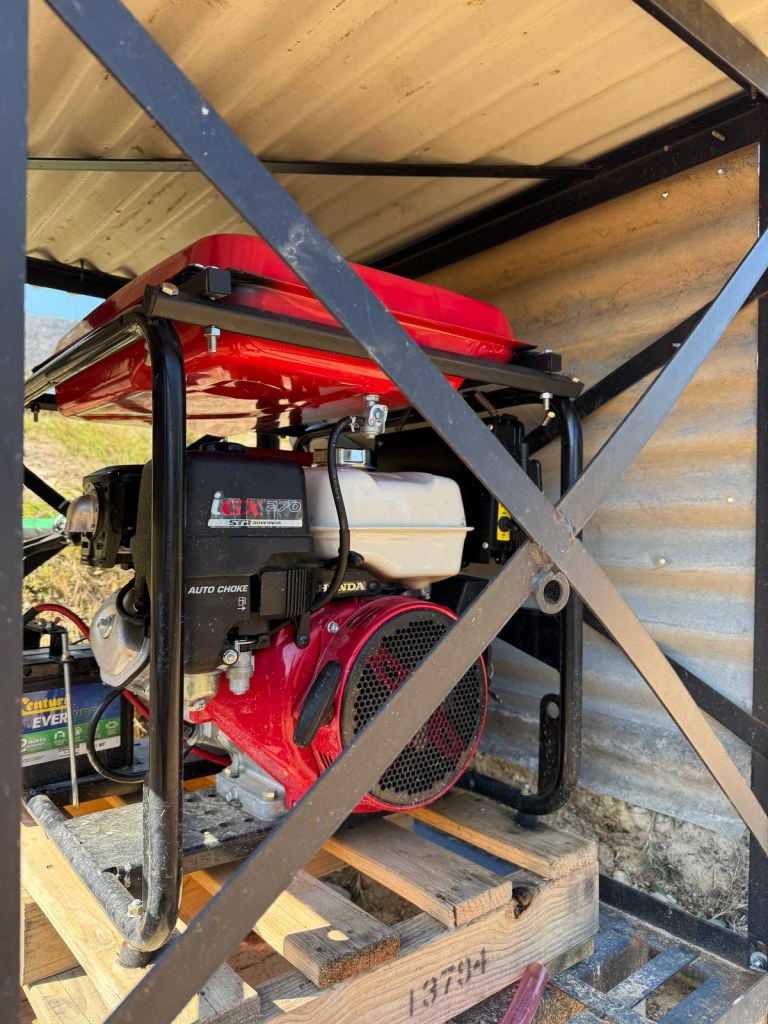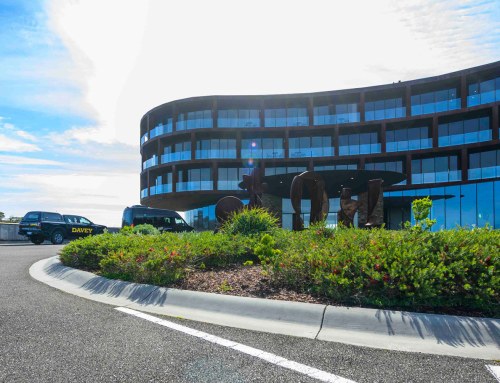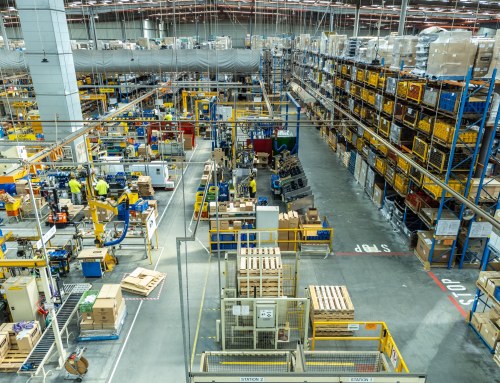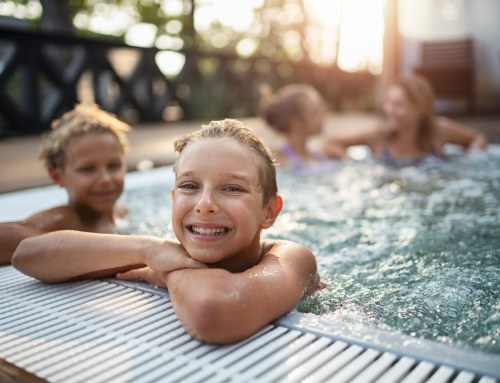When landscaper Sam Cox installed a Davey Remote Start Firefighter pump at his home, the goal was simple: enhance fire preparedness without compromising the natural beauty of his surroundings. His story struck a chord with thousands of Australians — sparking both interest and important questions. In the Davey case study, we detail how the system works and why it’s become a go-to solution for bushfire protection. To help address the most frequently asked questions — like what happens during a power outage or how the pump performs without mobile signal — we’ve also published Frequently Asked Questions. Explore it for practical answers and expert tips that can help you protect what matters most.
To help guide your understanding, Frequently Asked Questions are divided into seven key areas: Connectivity, Cost and Installation, Permits, Placements, Power, Water, and Wind. Scroll down to explore each section in further detail and discover practical answers and insights that can help you make informed decisions about protecting your property.
What happens if you don’t have signal?
Davey’s Remote Start Firefighter MKII is built for reliability, providing you with control in even the most critical situations. If your pump is in an area without network coverage, preventing SMS communication, it can still be operated manually using the key start or recoil start. Additionally, the system can be triggered automatically by heat sensors, ensuring rapid response when every second counts.
What happens if telecommunication systems go down?
Davey ensures that you’re always covered with multiple ways to keep your pump operating, even in the event of a telecommunication issue. If SMS connectivity is temporarily unavailable, local control options such as remote switch, key switch, recoil start or heat sensors remain fully functional, ensuring your pump is ready to spring into action when you need it most.
What happens if the internet goes down?
The Davey Remote Start Firefighter MKII system does not rely on the internet for basic operation. The pump functions independently through SMS connectivity, meaning it will continue to work if the signal is available. If the internet goes down, there’s no need to worry, your pump will keep operating as expected, and you can still control it remotely with your mobile phone. This makes the system not only reliable but also easy to use, even without internet access.
How does this pump and sprinkler system work?
The Davey Remote Start Firefighter MKII is an innovative, user-friendly solution designed to give you peace of mind when it matters most. Using a simple SMS connection, you can remotely start, stop, or schedule the pump from your phone. The system comes pre-configured with a Telstra SIM card, giving the best nationwide coverage in Australia. If an emergency arises, and you can’t activate the pump by phone, heat sensors ensure that the pump is activated immediately. It’s the ultimate combination of convenience, reliability, and peace of mind. Whether you’re on-site or miles away, you can depend on the Davey system to operate your pump efficiently.
For added protection, you can also set up a sprinkler system around your home or structure to help prevent fire damage, as seen in Sam Cox’s setup. The sprinklers can be strategically placed on your home or structure to create a barrier against embers and heat. To learn more about the sprinkler setup and how it can work alongside the Davey Firefighter system, contact your local Davey Dealer for expert advice and assistance.
Where can I buy a Firefighter pump?
You can purchase a range of Davey Firefighter pumps through our network of authorised Davey Dealers. Our dealers are experts in Davey products and can assist you with selecting the right system for your needs, as well as providing support and installation services and/or advice. They will also be happy to provide you with pricing and availability information.
How much does this cost?
At Davey, we offer personalised solutions to suit your specific needs. As the cost of the Davey Firefighter can vary depending on the model and any additional accessories or customisation required, we recommend contacting your local Davey Dealer for an accurate quote. Find your local Davey Dealer, and they will be happy to provide you with the most up-to-date pricing and help you select the perfect system for your requirements.
Who can help me install a system like this?
Davey’s network of trusted local dealers is here to help with both the Remote Start Firefighter MKII system and irrigation solutions, including sprinkler systems. Our dealers are highly knowledgeable in water management and can guide you on the best options for your needs.
Do you need a permit to install a sprinkler system like this?
In Australia, the installation of the Davey Remote Start Firefighter MKII with a sprinkler system does not require a permit. However, depending on your location and specific setup, local regulations may vary, especially if the system is part of a larger water or fire management plan. We recommend consulting with your local Davey Dealer, who can provide guidance on any potential permits or regulations that may apply to your installation.
Should I install sprinklers on my roof?
Placing sprinklers on the roof can be an important part of your fire protection strategy, particularly in areas at risk of bushfires. Roof sprinklers help cool the roof and create a barrier against embers. However, as Sam Cox mentioned, it may not always be necessary to install sprinklers on the roof, as the roof gets saturated from the spray during operation, providing effective protection.
While Davey doesn’t directly offer sprinkler installations, our trusted local dealers are well-equipped to provide advice on the best placement for sprinklers, including roof-mounted systems. They can assess your property and recommend an effective solution for protecting your home. For comprehensive fire safety measures, we also recommend consulting your local fire services for professional advice.
Could a fire start in my gutter?
A fire can start in your gutters if they are filled with dry debris, leaves, and other flammable materials. During a bushfire, embers can easily ignite this debris and spread fire to your home. To reduce this risk, it’s essential to regularly clean your gutters. Additionally, installing gutter guards can help prevent debris buildup, reducing the likelihood of a fire starting in your gutters.
If you’re considering a more comprehensive solution, adding a sprinkler system around your roof and gutters can provide extra protection. Davey’s local dealers can guide you on fire prevention and water management solutions that work best for your property. For comprehensive fire safety measures, we also recommend consulting your local fire services for professional advice.
What if there’s no power or electricity during an emergency, how do I start the pump?
The Davey Remote Start Firefighter MKII pump is powered by a Honda iGX270 petrol engine, meaning that if power or electricity is lost during an emergency, it won’t affect the pump’s performance. The system offers multiple start options, including recoil start, electric start (12V battery), remote start via SMS, and heat sensors, ensuring you can easily get the pump running, whether or not power is available.
This flexibility guarantees that the Davey Firefighter pump will perform reliably when you need it most, with several backup options to ensure it’s always ready to protect you.
How does a generator fit into this system?
A generator is not needed for the Davey Remote Start Firefighter MKII pump, as it is petrol-run and powered by a Honda iGX270 engine. This means the pump operates independently of external power sources, so you can rely on it even in areas without electricity. Additionally, the system offers multiple start options, including recoil start, electric start (12V battery), remote start via SMS, and heat sensors, ensuring you can easily get the pump running, whether or not a generator is available.
This flexibility ensures you can count on the Davey Firefighter pump to perform when needed, without the need for a generator.
Does the water drain back into a water source?
The Davey Firefighter pump is designed for effective water use and typically doesn’t drain water back into the source. Instead, it pulls water from the source (like a dam, tank, or other supply) and pumps it through the system as needed. The pump is designed to work with a variety of water sources, ensuring it’s a reliable option for fire protection and irrigation. If you need to drain water back into the source for any reason, you may need additional equipment, which your local Davey Dealer can assist with.
Can you recycle thatched water?
Recycling thatched water (water that may be used for irrigation or other purposes) through the Davey Firefighter pump is possible but depends on the quality and condition of the water. The system is primarily designed to handle clean water from sources like dams or tanks. If you’re considering using recycled water with debris or contaminants, we recommend consulting with your local Davey Dealer to ensure that the system can handle it and to discuss potential filtration options.
How does this work with a dam water vs tank water?
The advantage of using a dam as a water source is that it can hold a large volume of water, which is beneficial for extended fire protection or irrigation. The downside is that water quality can vary, and a dam may require more maintenance to keep the water clean and accessible. You’ll also need to ensure that the pump is able to reach the water level.
Water tanks are more reliable for storing clean water, and they’re easier to maintain and monitor for water quality. Tanks also allow for better water management, especially in areas where a controlled water supply is needed. However, the downside is that the water volume in tanks is limited, which may require regular refilling for extended use during emergencies.
Your local Davey Dealer can help you determine the best solution based on your property and needs.
What about grey water?
Grey water (water from baths, sinks, and washing machines) is not typically recommended for the Davey Firefighter system, especially in applications like fire protection, as it may contain contaminants that could clog the system. However, grey water can be safely used for irrigation if filtered properly. If you’re considering using grey water with the system, it’s best to discuss it with your local Davey Dealer to determine if additional filtration or system adjustments are needed.
Can you set up a secondary water supply?
Yes, a secondary water supply can be set up with the Davey Firefighter system. You can connect the system to multiple water sources (such as a tank and dam) to ensure that water is always available when needed. The system is flexible and can be customised to work with your unique setup, ensuring reliable operation in emergencies. Your local Davey Dealer can help you design and implement a secondary water supply configuration.
How long will my water tank last when using the Firefighter pump?
The amount of time your tank will last when using the Davey Remote Start Firefighter pump depends on the flow rate of the pump and the size of your tank. With a flow rate of approximately 500 litres per minute, here’s an estimate of how long your tanks will last:
- 30,000L tank: Approximately 60 minutes (1 hour)
- 50,000L tank: Approximately 100 minutes (1 hour 40 minutes)
- 100,000L tank: Approximately 200 minutes (3 hours 20 minutes)
These estimates are based on the pump running continuously at full capacity. The actual duration may vary depending on the conditions and pump settings. For more specific details, consult your local Davey Dealer to ensure you’re selecting the right setup for your needs.
How long does the fuel tank last?
The duration a fuel tank lasts will depend on the pump’s fuel consumption rate, which can vary depending on the model and the load it’s under. The Davey Remote Start Firefighter MKII, powered by the Honda iGX270E engine, has a fuel tank capacity of 5.3 litres. At full load and running at 3600rpm, the pump consumes approximately 2.4 litres of fuel per hour, giving a running time of about 2.2 hours per tank.
This provides you with ample operational time to handle fire protection or other tasks, ensuring reliable performance in critical situations. If you’re using the pump for extended periods, you may need to keep additional fuel on hand, especially during emergencies.
How much water can it pump and how long for?
The pumping capacity of the Davey Firefighter system varies depending on the model you choose. For example:
- The 5190HRS2 model offers flow rates typically up to 800 litres minute and can pump up to 46 meters in vertical lift.
- The 5290HRS2 model offers flow rates typically up to 430 litres minute and can pump up to 90 meters in vertical lift.
Running time will depend on the fuel tank capacity, the engine type, and how the pump is used. For example, a fully fuelled pump can run for several hours under typical usage conditions, but the exact duration can vary. Generally, you can expect up to 2 to 4 hours of continuous operation on a full tank, depending on the model and the intensity of the work.
For more specific details regarding flow rates, lift, and fuel consumption for different models, it’s best to consult the technical specifications for each unit or speak with your local Davey dealer, who can help you select the right pump for your needs.
What if there is strong wind? Will the sprinkler system work?
In strong winds, sprinklers may be less effective in distributing water evenly, as the water can be blown off course. Your local Davey Dealer can help you choose the right type of sprinklers and water delivery options to maximise coverage, even in windy conditions. Some systems can be adjusted to reduce the impact of wind, and strategically placed sprinklers or misting systems can also help improve efficiency during high winds.
For optimal results, it’s important to consult with a local expert to design a system tailored to your environment and needs.
